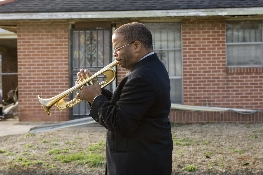The first half of “When the Levees Broke: A Requiem in Four Acts“–a documentary from Spike Lee that chronicles New Orleans’ struggle before, during, and after Hurricane Katrina–is terribly disappointing in just one aspect: more people are not able to see it, since it airs on HBO. Luckily, in our multimedia age, it’s likely that the film will be released on DVD in the near future. Not only does Lee present a compilation of raw footage of both human and meteorological emotion, but he also offers a pinpointed look at the people whom some blame for the high level of chaos that occurred in the city, and which, to some extent, still exists there.
Acts I and II (which aired last night) examine the days between the first reports of the storm’s formation and the actions eventually taken by the federal government to aid stranded and dying citizens several days after the town was submerged. While a peppy jazz trumpet plays, chronological scenes from the destruction unfold–the people who refused to leave, those who did leave, those who took shelter in the Superdome, and those who stayed behind to help. Survivors tell their stories, one after another, unrelentless and strong, just like Katrina. After a while it becomes hard to watch, though Lee was right not to cut their testimonty down.
I assume that Acts III and IV (airing tonight) will examine Katrina’s aftermath: the rescue and salvage efforts, the outrage of those victims who feel their situations were made worse not by any act of nature but by a lack of care from their own government, and the grassroots efforts during the past year from individuals and groups across the globe to aid those who were and are displaced.
Alarmingly unexpected is the story behind the politics of the situation, which Lee unravels for us. This includes conflicts between New Orleans Mayor Ray Nagin and Louisiana Governor Kathleen Blanco and the ineptness of the federal government’s response, to name two examples. Few mainstream media outlets dared go into any in-depth exploration of the political reasons of why Katrina aid was handled as it was. Some did, and Lee, who has proved himself a reliable and relentless cultural commentator, grabs hold of their coverage and runs with it.
In “When the Levees Broke,” the reality of Katrina’s wrath becomes most real with the still shots of dead bodies floating on top of cars, on chairs under blankets in the middle of the street, and inside the Superdome. Lee offers these images while avoiding the shock factor and staying clear of any hint of tastelessness. Watching Lee’s film (which will be rebroadcast in its entirety on Aug. 29.), I felt angry and perplexed. Acts III and IV are sure to invoke more of the same–along with a sharp sense of urgency, when we see that, unlike most stories, this one has yet to come to a happy ending.


